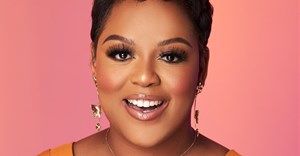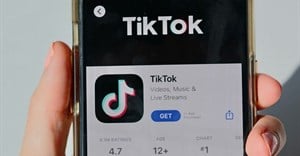Trending
Elections 2024
Jobs
- Printing Sales Account Executive Johannesburg
- Sales Manager Johannesburg
- Mid/Senior Graphic Designer Kloof
- Coordinator - Marketing and Communications Johannesburg
- Social Media Content Creator West Rand
- Google Paid Media Specialist Johannesburg
- Digital AI Intern Cape Town
- Senior Copywriter Johannesburg
- Sales Executive/Design and Display Industry Johannesburg
- Client Service Manager Johannesburg
Future of Media Conference focuses on engagement and content
The event delivered some insights into the non-stop evolution of media, the necessity to ‘know’ and measure one’s audience and the use of traditional print and broadcast platforms, alongside digital technologies, to engage and captivate a target market.
International keynote speaker from Innovation Media, Juan Senor, is familiar with the ever-changing world of media and enabling global media companies to transition from a predominantly print to increasingly digital newsroom environment.
One of these companies currently in the transition includes conference host Times Media, which not only is introducing new process flows and editorial models but also is physically restructuring its newsrooms and will be moving into a purpose-built facility in the next few months.

Mediamorphosis
While Times Media is increasingly digital-first in its approach to editorial content, it is still maintaining the development and production of print media. As Senor pointed out in his ‘Mediamorphosis’ presentation, the print environment should still show good health for the next 10 to 15 years, but during that period significant innovation is required. Part of that innovation includes tackling content production differently – understanding the difference between high-value ‘caviar’ content versus the ‘peanuts’ of commoditised news.
His opening presentation set the stage of things to follow at the conference.
Senor also noted that in terms of digital media, the dependence on web traffic numbers was often misguided, saying that ‘clicks’ often did not translate as bona fide access to an engaged, relevant audience. Rather, media (and advertisers) should be looking for solutions that increase the number of “verifiable eyeballs spending time with the content” and delivering quality audiences. It is a concept Senor refers to as clicks vs clocks, where the creation of high quality, reader-relevant content becomes the driver.
Content and new technologies
The conference also hosted presentations and conversations with brands that have been innovating with content, and embracing new technologies.
Alon Lits, GM of Uber, spoke to Jeremy Maggs about Uber as a lifestyle brand that was heavily reliant on innovation and research to drive acceptance in new markets – and the role of media and influencers. Lits’ advice is to ensure that one’s core product remains great, because if it is, “your core customers will do the job for you.”
‘Programmatic’, or programmatic-buying, is an essential part of the media landscape yet is one which marketers are often overwhelmed by. Gil Sperling, co-founder of Popimedia commented on the complexity of the programmatic landscape, and explained the process of real-time bidding which resembles transacting on a stock exchange. Sperling also spoke about advertising on open versus (the challenges of) closed systems such as Facebook, which Sterling pointed out is the most qualified audience database globally.
Branded content
Joshin Raghubar, chairman and founder of iKineo, and Donald Clarke, CEO of Lucky Bean Media, shared their insights on branded content creation, and how to incorporate branded content successfully into audience conversations. Raghubar cited numerous examples of brands that started out with a single, tangible product but have since expanded their product portfolios by incorporating media and content into the mix. One only has to reference Nike’s expansion from sport shoe production, to now delivering content to communities on its own online platforms and apps. Similarly, Red Bull has become a ‘publishing empire’… that happens to sell a beverage.
Clarke, who produced reality television series Survivor South Africa, specialises in the production of branded content. He said it is often very difficult for marketers to understand the nuances of content branding and entertainment… particularly where the story, and not the product should dominate. Integrating the product into a story sensitively is key. He also stressed the importance of honesty and authenticity, taking an audience on a journey, and then leaving with a cliff hanger.
Participants of a panel discussion on branded content similarly argued the merits of story telling, in the context of content marketing. While consensus was that content needs to deliver ROI, it was also clear that outdated models that ‘pushed’ content towards an audience needed to be replaced by an appetite for the audience to ‘pull’ and go find the brand. Pepsi Pokane moderated Michael Balkind, CEO of Content Bar, Kyle Hauptfleisch, COO of Barbarossa Media and Patrick Conroy, MD of Platco Digital (Openview), in discussion.
VR engages, technology progresses
Of course, with content creation being on everyone’s lips, the advent of VR (Virtual Reality) creates further opportunities for media and brands to entertain and engage. Hendri Lategan, CEO of Barbarossa Media, and Kelly Jackson, GM: South Africa for Contiki Holidays, spoke of the rise of VR in delivering memorable brand experiences. Jackson spoke about how Contiki are already using VR to sell its 100,000 holidays annually. VR is such a core component of the marketing function that Contiki has its own in-house production team and will be launching new VR content in August or September this year.
The use of media and technology in supporting entrepreneurial and start-up businesses delivered some interesting insights. Elias Sikazwe of SnapScan shared how the business grew from 200 to 10,000 merchants within only six weeks of launch and how digital products, such as Slack and Looker, have facilitated the business.
Nic Haralambous, founder of Nicsocks, was quick to state that technology does not necessarily lead to more product sales, but that word of mouth, driven by social media is essential – technology should be there to make business easy.
Simon Hartley, co-founder of WumDrop found that technology was key to the success of his on-demand delivery business, relying on geolocation and other apps. Stating the necessity for marketers to produce mobile content, Hartley pointed out that by 2021 it has been projected that there will be 6.1 billion smartphone users globally and 28 billion connected devices.
Location-based media is essential
Location-based media (LBM) is becoming an ever essential tool in allowing brands to customise their messages to consumers. Craig Page-Lee of d-cifr, and Marc du Plessis, commercial director of Spark Media presented their insights, one of which is that with LBM, “everything is local”, which is why it is important for marketers to learn how to bridge the gap between the mobile and physical worlds. Sharing stats from the Google Performance Summit, apparently 75% of people, who search for something nearby using their smart phones, end up visiting a store within a day, with 28% of those searches resulting in a purchase.
Sponsorship vs partnership
David Sidenberg, CEO of BMi elaborated on the differences between sponsorship and partnership, which led into a panel discussion that drew opinions from Doug Place, CMO of Nando’s and Hazel Chimhandamba, executive head: Sponsorship at Standard Bank.
Chimhandamba said that for sponsorships or partnerships to be successful, they need to be well aligned to the target audience. As an example, Standard Bank’s business division gets involved in supporting the triathlon community, which comprises a small, but very relevant target audience of C-level executives, whereas the personal banking division caters to a broader audience through its support of cricket.
Importantly, it is important for a brand’s values to be in alignment with the sponsorship. Shared values should include co-development values. Place also believes that for a sponsorship to be successful for both entities, there should also be enough room for brands to maintain their differences.
Big data rules
The use of ‘big data’ and its value in marketing was debated by Geoff Cohen, co-founder and CEO of Delv Media; Ryan Jamieson, director at Karabina Business Technology & Innovation, and Chris Wiggett from Britehouse. Big data allows marketers to understand which customers are most important in real-time, which can be gathered from the digital touch points they are visiting. After gathering data, it seems to be part-science, part-art that defines at which point a brand will intercede to create some engagement. It is not just based on a single visit to a website, but rather based on the journey and sequence of events over a period of time that give a clearer indication of whether a potential customer becomes a qualified prospect or not.
Box tops and social media
The migration from analogue to digital set-top boxes for television broadcasting has been a point of controversy in South Africa for a number of years. Duncan McLeod, founder & editor of TechCentral, gave deep insight into the technical as well as political aspects dogging the issue particularly around encryption standards.
The final panel discussion of the day, moderated by Toby Shapshak, editor-in-chief and publisher of Stuff, looked at the increasing power of social media and the role of closed platforms like Facebook, Twitter, SnapChat, Instagram, etc. Unsurprisingly, the thread of the discussion echoed sentiments throughout the day that ‘engagement is the holy grail’ and more so for social media.
Yavi Madurai, MD of Black Box Theory said she believed the golden age of story telling has arrived.
Riaan Wolmarans, head of audience development at Times Media, and responsible for driving the creation of content that increases engagement with the group’s digital platforms, believes that within the media industry one of the challenges is to get journalists to start thinking as marketers in terms of the presentation of content. Ultimately, this would drive the creation of stories that ‘pull’ an audience onto platforms.
Glenn Gillis, CEO of Sea Monster, a company that provides gamification solutions to brands looking to engage and educate their audiences spoke about intrinsic and extrinsic motivators and the roles games can play in driving short-term engagement versus longer-term brand loyalty. He quoted campaigns, such as the current Pick ‘n Pay Super Animals and the educational Old Mutual Moneyvarsity site.
In summary of the day, Trevor Ormerod, GM Group Sales & Marketing at Times Media believes the annual Future of Media Conference delivers great benefits to the media and advertising industries. “Being in the business of media ourselves, the imperative to create a knowledge-sharing event that benefits innovation across the entire industry, is core to our philosophy. By supporting the successful evolution of the industry, the positive effects will be felt by marketers, advertisers and media owners alike.”


















